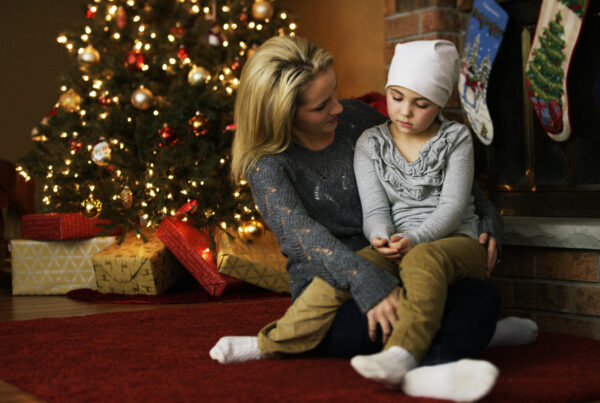By: Bari Sobelson, MS, LMFT & David Lee Sexton, Jr.
Our March 22, 2018 webinar was facilitated by Dr. Lauren Marlotte of the Division of Behavioral Health and Nathanson Family Resilience Center at the University of California Los Angeles. In this webinar, 3 broad areas of violence that impact youth were discussed- bullying, relationship violence in teens, and school shootings. Dr. Marlotte shared highlights of all three of these types of violence but tied them all together by talking about overall risk and resilience factors, taking a family systems approach, and ways to build resilience in families including some resources. Below are some insights, questions and answers, and resources gained from this engaging and helpful webinar.
Insights
Here are some insights that the participants and our team took away from the webinar.
- Adult logic may not be the best fit when looking for solutions to address and combat bullying. Lauren led us through a series of scenarios, asking for our thoughts on the ways in which we would help our children navigate a bullying situation. Many of us were surprised to find that the adult logic we were applying to these scenarios were not, in fact, the best ways to handle them.
- 1/3 teens experience violence with a dating partner. In addition to sharing this alarmingly high statistic, Lauren shared that girls and women between 16 and 24 years old are experiencing the highest rates of Intimate Partner Violence.
- There are negative consequences for both the bully and person being bullied. Children who are bullied are at higher risk of experiencing negative physical health, mental health, and school consequences such as anxiety, depression, PTSD, low self-esteem, physical health problems, and more. Children who are bullies are at higher risk for engaging in violence and other risky behaviors later in life such as misusing substances engaging in delinquent behaviors, carrying a weapon, and being convicted of a crime or receiving a citation as an adult.
- School shootings affect more than just the people at the school. It’s not just the school personnel, children, and families of the school who are affected. Anyone who hears about the shooting on the news is also affected.
Questions and Answers
The participants were highly engaged, asking important and relevant questions throughout the webinar. Below are some of the questions by the participants and the answers supplied by Dr. Marlotte.
Participant: Why would bullies engage in sexual activity earlier?
Dr. Marlotte: “My best explanation would be that kids who engage in bullying are at higher risk of negative consequences [such as] being negatively influenced by their peer groups
[or]
having less parental supervision or involvement… teens are still developing the frontal lobe, the centers of their brain important in decision making and thinking things out… they may be more likely to be impulsive and make reckless decisions. This is a guess as to why these things might be correlated.”
Participant: If children tend to “freeze” and have trouble with a comeback, what would be good advice?
Dr. Marlotte: “When a child is under stress, they may experience fight, flight or freeze… That’s why having some sort of preparation to coach children through using these skills can help them with those fight, flight, and freeze responses. Sometimes just acknowledging that that’s the way our brains and our bodies respond to stress can help children understand why they might experience stress in a certain way. Maybe they silently take a breath and then use one of the teasing comments and walk away from the bully. Practice and rehearsal of the bullying strategies, paired with the practice and rehearsal of some of the emotional regulation strategies, can be paired together to be able to use those strategies to the best of the child’s ability.”
Participant: This might be difficult for children with developmental disabilities who have trouble with social skills even in the best situations. How would we advise them to handle the situation? Would a bullying social story be a good option?
Dr. Marlotte: “I attended a training by [a professional] who developed a curriculum on social skills for children with Autism and she writes in her manual [that] the nonverbal teasing comebacks, are sometimes the most difficult for kids with developmental disabilities. In particular, she works a lot with kids with Autism… They may not have the same spatial awareness about what an eye roll feels like or looks like, or their face may end up making a face they are not intending to when they are trying to look standoffish. So, absolutely! Doing a role play, a rehearsal… I’d say starting with a social story and seeing if the child is able to apply this to their real life as well to make sure they can make that leap. I also think that this is a wonderful thing to do as a prevention strategy. There are lots of ways to have conversations about bullying even if it’s not an issue that comes up.”
Participant: What is a good bullying curriculum that can be utilized in schools? Are there any to train teachers to help with bullying prevention in their classrooms?
Dr. Marlotte: “I would recommend the stopbullying.gov website (specifically https://www.stopbullying.gov/prevention/at-school/index.html) to find out more information about prevention and evidence-based anti-bullying programs. I would also recommend that schools adopt a social emotional learning approach or curriculum, such as RULER (http://ei.yale.edu/ruler/) or the Families OverComing Under Stress (FOCUS) Resilience Curriculum (https://nfrc.ucla.edu/FOCUS).”
Participant: How often is it is a “lone” bully and how often do they have back-ups in their bullying?
Dr. Marlotte: “Since the bully tends to want to get attention and social notoriety, I think there’s typically people around… There might be one kid who’s the instigator or the primary bully, and they may be able to suck other people into what they’re doing rather than having a group of kids decide to be bullies all together. There’s typically a leader with others who are either bystanders or occasionally jumping in.”
Participant: Sometimes using the term abusive to a teen doesn’t resonate with them as they do not consider what is going on in their or their friend’s relationship abusive. Possibly breaking it down with some defining- controlling, jealousy, isolating from friends, etc.
Dr. Marlotte: “Yes, using specific examples… Sometimes, it lands a little bit better to say healthy vs, unhealthy
[or]
acceptable vs unacceptable. If there’s other types of words or language that you’re hearing from your teen, using their language can be very helpful. We have a trauma clinic here and we see a wide variety of families… I’ve had families experience some very traumatic situations and they’re saying, ‘Well, I don’t have it as bad as this situation that was in the media’ or ‘I didn’t experience this type of situation’. So they may not actually consider themselves trauma survivors. So then if THEY choose to not identify themselves in that way, I don’t push that. I talk about the stress impact of their experiences that they have had and allow them to use their own language around that while acknowledging that what they’ve experienced is going to have a large impact on them. But if there are certain words that don’t resonate, that is absolutely fine.”
Participant: How do we counter the culture of meanness/name calling/bullying that has developed, been promoted, and modeled in our country in the last couple of years? There is a trickle-down effect from what is modeled from adults and what children (and adults) see on the news on a daily basis.
Dr. Marlotte: “It’s important to have conversations with clients/children about meanness and name calling that is present in the media. Positive, supportive adults model appropriate behaviors and discuss and address inappropriate behaviors highlighted in the news and popular culture. Don’t read or watch news sources that engage in name calling or are clearly biased. When mean behavior is observed, engage adolescents in a discussion around the behavior and explore other ways of expressing one’s self while being respectful. This helps reminds adults, too, that being mean or bullying behaviors are unacceptable. Point out examples of positive behaviors that are portrayed as well. Just like we ask parents to ‘catch your child being good’ and provide praise, we should also be in tune with when the media is respectful and uses effective communication.”
Resources
Throughout the webinar, Dr. Marlotte and the Family Development Team shared a plethora of resources. There were also a couple of resources mentioned by participants. In addition to the resources listed below, you can find a comprehensive list of additional resources compiled by the Family Development Team on the event page.
- National Child Traumatic Stress Network
- Resource Discovery for NCTSN School Personnel Resources
- Love is Respect
- Wonder Classroom
If you are interested in watching this webinar, the archived version and all of the supplemental materials can be found on the event page. If you are interested in obtaining CEUs for the webinar, they will be available until March 22, 2019. Details of how to obtain the CEUs are on the learn event page mentioned above.
This post was written by members of the OneOp Family Development Team. The Family Development team aims to support the development of professionals working with military families. Find out more about OneOp Family Development concentration on our website, Facebook, and Twitter. You can also listen to our Anchored. podcast series via iTunes and our website.












